A no-drain acid wash is a term coined for a pool plaster cleaning or descaling process, without draining the pool water. Essentially, the pH of the pool water is reduced to a very acidic level of around 1.0, and an alkalinity level close to zero. Then the pool is brushed several times per day with a steel-bristled pool brush to loosen scale and dirt. After 3 days, the process is reversed, and the water chemistry returned to normal.
How Does a No Drain Acid Wash Work?

By lowering the pH and Total Alkalinity to such low levels, a corrosive water environment is created, which will slowly eat away at soft materials, like scale and stains. Such low pH can also continue to etch soft areas of plaster, however the no drain acid wash process only lasts for 3 days, and is reversed before (too much) damage can occur.
Not as good as a regular acid wash, which is a direct application of liquid acid to the plaster surface, to strip away a thin layer of plaster. A no drain acid wash is much less invasive, we are simply making the pool water very acidic. As such, results are good, but always less than a regular acid washing.
However, no drain acid wash is a popular alternative to draining the pool in areas with drought restrictions, limited well capacity or expensive city water supplies. In addition, regular acid washing is personally and environmentally hazardous, and can be quite expensive to have done.
Preparing for a No Drain Acid Wash
- Cool weather with clear skies ahead
- Over-filter and over-sanitize the pool in the week prior
- Clean pool very thoroughly, vacuum, brush and skim
- Remove all steel; ladders, rails, pool lights
- Remove pool cleaner and pool accessories
- Overfill pool to top of tile, or drain to bottom of tile
- Shut off pool pump and remove any timer ON trippers
Since the pool filter will be off for nearly a week, you want to do this during cool weather, and without storms or high winds, to keep the pool as clean as possible. It is helpful to over-filter the water by running the pump 24 hours per day for several days before a no drain acid wash. Additionally, shocking the pool heavily to remove organics and establish a high chlorine residual can help avoid cloudy water or algae growth. Algaecides can also be used.
Since the pool water will be very acidic, it’s important to remove soft and shiny things from the pool, and keep the pump turned off during a no drain acid wash. PVC pipes and ABS pumps are fine with the low pH condition, but soft metals and rubbers used on pool equipment can be damaged if the pump runs for any length of time.
How to Complete a No Drain Acid Wash
Before you start a no-drain acid wash, be sure you are committed to the entire process and can apply each step of the daily process in a timely and complete fashion. This is a major swing in your pool water chemistry, so you must be able to commit to the process.
Chemical Usage and Doses
- Add 16 oz of Super Stain Away per 10,000 gallons
- Add 8 lbs of pH Decreaser (Sodium Bisulfate) per 5,000 gallons
- Check Total Alkalinity to be sure it’s at zero; if not add more pH Decreaser
- Brush pool several times per day, with a steel pool brush, test water each day
- After 3 full days, begin to reverse the process, by raising pH and Alkalinity
- Add 8 lbs of pH Increaser (Soda Ash) per 5,000 gallons, in 3 equal doses
The Super Stain Away is an important step. Adjusting the pH and alkalinity to such low levels can precipitate minerals and metals, producing more problems. Use a quality sequestering agent to keep minerals locked in solution during the process.
Add the pH Decreaser evenly around the pool, distributing it as broadly as possible. Add it all at one time, and add more in areas with heavier staining. Brush the pool immediately afterward, and test the Total Alkalinity with a reliable test kit, to determine if the TA is actually 0 ppm (if not, add more pH Decreaser).
Add the pH Increaser in 3 separate doses, 6-12 hours apart, brushing the pool in between each addition. This is done to avoid clouding the pool water, for pools with high levels of Total Dissolved Solids, or TDS. However, don’t be alarmed if you have temporary clouding of the water when adding the base, even with partial doses. Precipitated solids are mostly carbonates that will absorb and help to re-establish the Total Alkalinity.
Test your pH and Total Alkalinity again, and before you add the last several pounds of pH Increaser, so you don’t raise pH and Alkalinity too high. Once your pH and Alkalinity levels have reestablished themselves as close to normal (pH: 7.2-7.6, TA: 80-120 ppm), you can turn the pump on again, and replace any removed items.
Follow-Up Advice for No Drain Acid Wash
- Add a Clarifier if needed, to help restore water sparkle and clarity faster.
- Test your water every day for a week. Returning pH and Total Alkalinity to normal levels can often require several repeat treatments.
- Proper Calcium Hardness level is also important to prevent scaling in pools. If below 180 ppm, add pool Hardness Increaser before starting the process.
- Continue to brush the pool every day with a steel bristled pool brush.
- Inspect your plaster closely each day while brushing. If excessive etching or rough areas appear, abort and reverse the process immediately.
- Do not shock the pool or add chlorine until pH and Alkalinity return to normal, but you can add a good algaecide if weather is warm or the water begins to turn.
No drain acid washing can be an easy alternative for some folks who cannot easily or cheaply refill a large plaster pool.

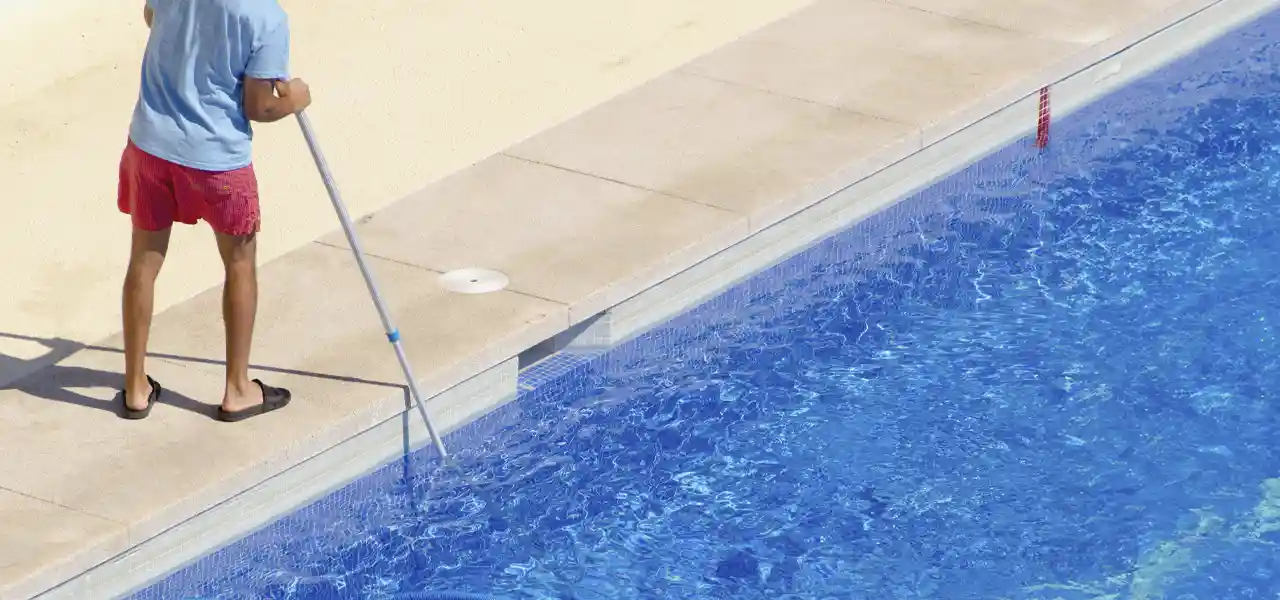

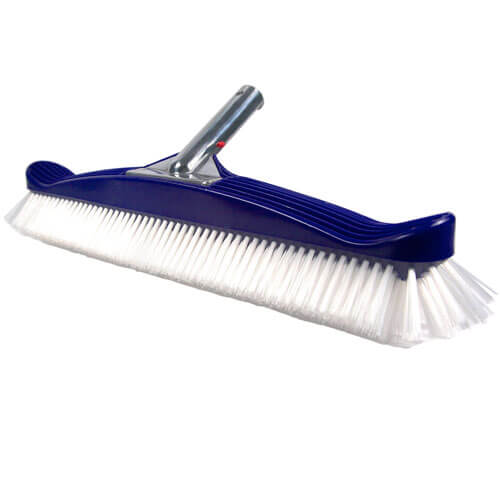
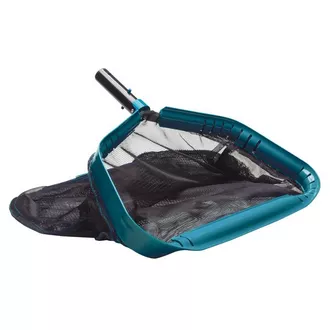
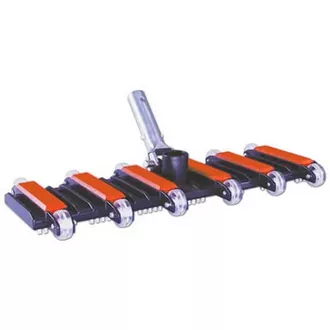
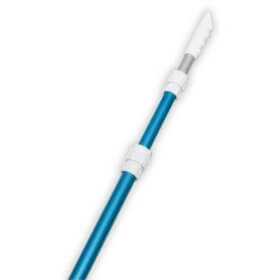
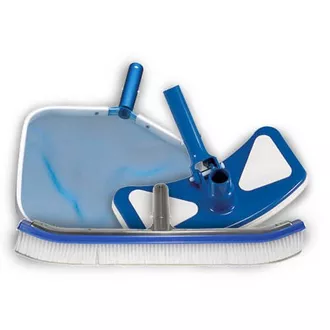


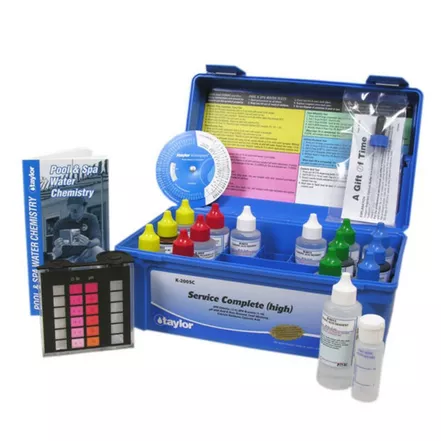
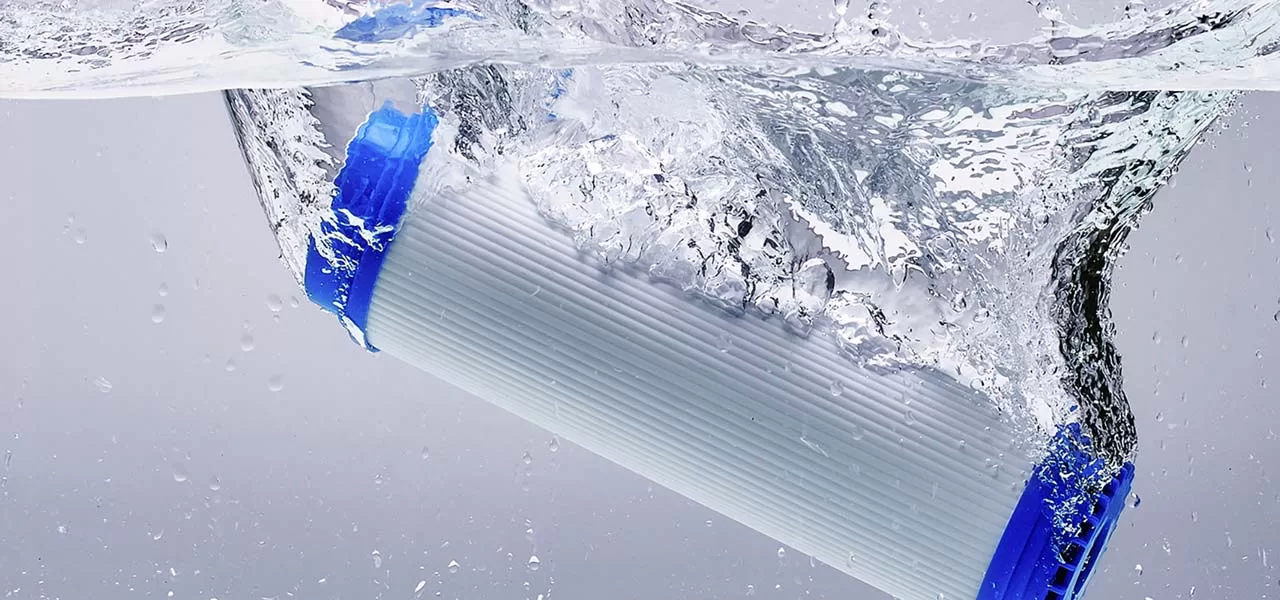
Our cat drinks from the pool. Would a no drain acid wash be harmful to him?
I don’t think so, perhaps like drinking lemonade, without the flavor? I suspect that the cat will not like the taste, after one slurp. 🙂
Was wondering if this would work for our pool?? Here is our situation: Our Nevada located pool is about 7 months now. It is a small pool spa combo (spool) at 8’x17’, 3.5’ deep. It has a smooth quartz finish in a deep gray color. Within the course of a week, the finish went from smooth and silky to rough as 80 grit sandpaper. We have a pool maintenance guy and when we questioned him, he said he has never encountered this problem. We took a water sample to our local pool supply to have a full analysis and the gave us a report showing that our pool chemistry is wildly out of wack and that levels in out pool are what they would expect from a 5 year old pool. Needless to say, pool guy was fired. The supply company gave us a list of chemicals we needed to try to regain control, and we have been working on that for two weeks, but the pool finish is about the same (maybe slightly less rough, but that could just be wishful thinking). Another pool maintenance company suggested that we need to turn off the pump and add 2 gallons of muriatic acid to resolve the calcium build up while leaving the pump off for at least 24 hours (that’s what they said they believe is on the surface – but not based on physical examination). Upon what feels like endlessly searching the internet for answers (since no one seems to have any solid ones), I came across this blog and the no-drain acid wash – just trying to find and answer to reclaim our “new” pool. :/
Trish, most likely what happened was a classic case of very high pH with high calcium that came out of solution and deposited on the walls. High pH is common with brand new plaster pools, for about a year, requiring near weekly additions of acid. You can try to redissolve it with the 2 gallons of acid, aka no drain acid wash, with brushing and it will likely dissolve the crystalline nodules. After raising the pH and alkalinity again, use a sequestering agent, such as our Stain Away, or any brand (there’s a hundred of ’em), and add regular doses to maintain a level, and continue to monitor the pH and keep it below 7.6, also important for chlorine potency. Another method is to drain the pool and acid wash, then refill. Acid wash will restore the deep gray color most completely, and should be quick and easy with such a small pool.
So two questions.
1) My pool guy was hesitant to do a non drain acid wash citing that i have a heater connected and was worried about it affecting it? Is that true?
2) in this post it states, that by lowering the PH and Alkalinity it creates a corrosive environment, so not to leave it like that for too long. My question is, what would happen if it was left like this for too long? I know for fact my pool was left with very low PH and alkalinity for a very long time and now there is significant brown stains everywhere… water is clear, but browning everywhere.
Matt, it’s really a non issue, because, in a no-drain acid wash, you do not run the pump, so the heater should not be exposed to any low pH water. Well maybe a little bit, while you are still adjusting perhaps, but not too much and not too acidic. For the length of leaving the pH level low, is that it depends how low. If your pH is 2-3, maybe just a 4-6 hours is sufficient, but if the pH is higher at 4-5, maybe a 36-48 hours. Your test kit will not test at such low levels, but you can use online tools like poolcalculator.com to determine the exact amount of dry or liquid acid to use, to bring the pH to a specific level, for a specific amount of water.
We had our pool replastered and refiled last November in medium gray. I was immediately concerned with the finish on the plaster as it was quite nonuniform with lots of lighter blotches, very visible trowel marks, and even some boot prints. I had the contractor come back a week later and he said it wasn’t bad, get used to it, and I had to pay him his 15K since unsigned the standard disclaimer about blotchiness of colored plaster pools. He said the color runs through the plaster so if I wanted to I could do a low acid etch. Then he left. Since then I’ve had two pool service guys with 20 plus years experience tell me it is a very poor finishing job.
Question: Since I assume the plaster is not stained per se, do you think a low acid etch would reduce the blotchiness and give a more uniform grey appearance? Thanks.
Tom, absolutely, acid washing will possibly remove the trowel burn and the footprint, or mostly, and will also remove a layer of scale on the surface. Sheets of scale occur naturally on all pools, but you don’t really notice it on white pools, but on gray pools, they tend to highlight themselves and any imperfections in the surface. Grey mottling is normal, and some surface imperfections or shading variations are considered inherent in the product, but sounds like he may not have had a very experienced or well trained crew. Acid washing will help improve the appearance, then begin using a sequestering agent regularly, per label instructions, to keep mineral scale in solution. Like Stain Away, Scale Free or Jack’s blue stuff > https://www.intheswim.com/c/stain-chemicals
Hi…we have had problems with a brownish stain throughout our pool since the first year of reopening…looks like dirt stain. Water is clear, but dirt stain throughout the pool…seems worse this year. Going to try your no drain acid wash…just wanted clarification on the timing of each step…is each step done daily…or step 1 done one day, step 2 done next day…then see if it clears up before moving to next to reverse ph balancing.
hi Tina, yeah it is pretty much a daily step, 2-4 days total, depending on how the stains react.
Hi we are having trouble with green and black algae containment we finally drained the pool it is a plaster in ground not sure what we keep doing wrong this is the second time in 16 years going to attempt acid wash any other recommendations?? Thanks
Hi, yes to the acid wash. Pull out the pool light and clean behind there, and any other crevices that may be hiding algae, like under the ladder treads. Then, replace the filter media – sand, cartridge or DE grids, and also get rid of any soft fabric floats or noodles or cleaner debris bags/filters that may harbor the spores. Use an algaecide, treating weekly, per bottle label. Also use phosphate remover annually, and keep your chlorine level a bit higher, and run your filter a bit longer each day. Adding a supplemental like nature2 express would be helpful, as would treating regular with an enzyme. Finally, shock the pool regularly, every 2-4 weeks.
After removing our mesh cover in a warmer than usual Maryland winter, we have green all over the concrete pool surface – darkest on steps and lighter all through the sides and bottom. After heavy shock, the water is clear but green still there. Tried 2 different agicides and a metal away in case it was from copper. Nothing will even allow a steel brush to budge it at all. The smooth tiles have a hard sand feel. The water test shows all level are ok with ph at 7.1. Would an acid bath work do you think? Confused why the aligicides and shock did not work. 5th year with the pool, never had this problem.
Hi – the grit on the tiles makes me think that calcium scale has mixed with algae and dirt, to form the hard to remove green color. High calcium hardness combined with high pH levels and warm weather, and depleted winter chemicals may have been the perfect storm. An acid wash would likely remove it, you can test by lowering the water level down below the first step, and pouring a 50:50 acid:water mixture, from a flower watering can, over the step, scrubbing briefly, and hosing off within 60 seconds. If it works, an acid wash would be a good next step.
Will this work for hydrazzo finish
Hi John, interesting question and the answer is – I’m not sure. Hydrazzo is quite smooth and not sure how this treatment will work to remove stains. An acid wash, or even a no-drain acid wash, works by stripping off (removing) a thin layer of pool plaster to expose fresh, unstained plaster beneath. Not sure if that’s possible with Hydrazzo.
We just opened our pool for the season and discovered that the dye from a red rug (trapped under the pool cover all winter) has turned the pool red. It looks like the dye has stained the walls and floor. Would a no drain acid wash remove the dye stain?
Hi Anna, that’s unfortunate, the carpet was probably used to protect the cover from a sharp edge or corner. I would start up the pool as normal and see if it naturally dissipates with chlorine and sunshine. If not, then a No-Drain acid wash would likely work, yes. Or, if isolated to one area, you could try EZ Stain remover or a Jandy Stain Master device.
Hello,
When removing the pool light before treatment will I need to pull the power cable through as well? I would assume that the high acidity would eat at the cable sheath.
Thanks in advance!
HI Kyle, the cable rubber is very thick, it will be OK in the low acid water for a time. No problem.
Is this appropriate for a fiberglass pool? Thanks
Yes, it could be in certain instances. Acid washing a fiberglass pool may not remove all types of stains, and behaves much differently to the gel-coated surface, than it does with a plaster pool finish. Acid washing (or no-drain acid washing) a plaster pool actually removes a tiny layer of plaster – not so with fiberglass pools. You could test a small area, using dry acid (pH decreaser), on the surface to see if the stain removes… if so, it could be a winner to do the entire pool.
Is this process ok to use on a pebbletec surface that has sat swampy for many years in Florida, or better to drain and do the acid wash?
Hi Kelly, if it has been several years, it’s definitely best to drain and acid wash. No Drain is used in areas of water restriction, or areas of very high water table, or homes with a small and shallow well.
Hi, my pool was diamond brite about 7 weeks ago the co who did came out a week ago and said I should no drain acid wash it. He says it has calcium in it & the process will help fix any imperfections. I ask you because this is second time he replastered pool in little over a year. I believe first time was bad due to using a inferior product this time he used diamon brite. Pool looks good to me except sloppy job getting on the glass tiles.should I do it or is it to soon?
Hi Shane, The process is normally done for stain removal, or could help dissolve calcium nodules or calcium deposits, if they exist (is the surface rough? Or is it smooth all over?) which may be the reason for using it. If the surface is very smooth, I would avoid it, but if there are calcium deposits, nodules or crystals that are rough and sharp, then OK, that would be a good reason to do a No Drain acid wash.
Hello Davy: I want to do the “No Drain” wash, but I suspect, in my area, it will probably rain, at least, one, two or all three of the days (I’,m having an event and need the pool ready, shortly). It will also be in the mid 80s to 90s. How will this weather affect my wash? Thank you! Charles
Hi Charles, I don’t think it will have much affect at all – weather is not really a concern for a no-drain acid wash.
Curious to know what causes the stains to begin with. Is there a way to figure that out. We had done a citric wash 4 months ago and the stains are back.
HI Ginny, pool stains are usually 1)mineral 2)animal or 3)metal. Mineral stains are caused by calcium scale mixing with dirt or oils, making tan or off-white deposits. Animal would be any organic stain from animals (worms, bugs, algae) or leaves, dirt, berries, and metal stains come from the water, usually iron or copper. If it looks like rust stains, that could be from the inside out, or from metal objects falling in the pool. You are right to investigate the cause of the stain. It could be something in the water, in the pool, or blowing in on the wind, it could be a chemical reaction sometimes.
I’m currently on day 2 and am seeing progress. My pool was so bad I thought the dark spots were the bad ones. Can I extend longer or do I need to balance the pH and start again.
Curtis, keep it going, it can take several days. Try to monitor closely, and when you see no continued improvement after 24-36 hours, it’s time to reverse the process.
Should a pool be acid washed before filling after a new diamond brite has been applied?
Mike, not at all – that would not be normal. Acid wash before plastering, but not after – with fresh plaster, it would likely damage the new whitecoat
Hi, we are in California and haven’t been able to drain and refill out pool for over 6 yrs! We now have terrible calcium and staining problems. We also have well water in my town so the calcium levels are always high. Will this still work as we are still water restricted!!
Hi Lisa, it’s almost invented just for your situation actually. For those that can’t drain a pool easily, for either reason. Give it a shot!
Where are you located in California? I am a pool service professional located in Thousand oaks CA.. I have alot of customers on well water… you can also do the no drain water renew after the acid wash to give your pool another 8-10 years of water life